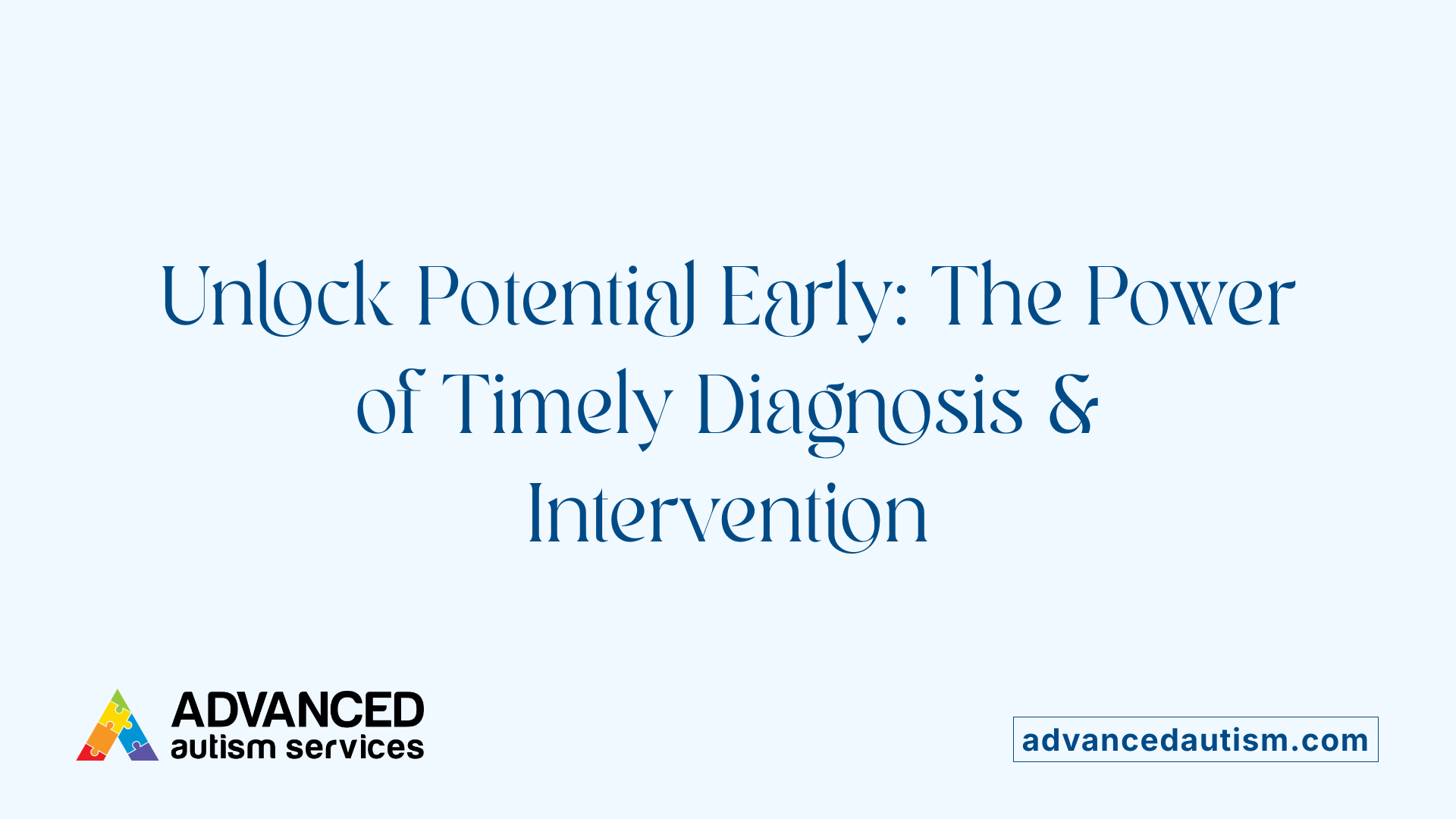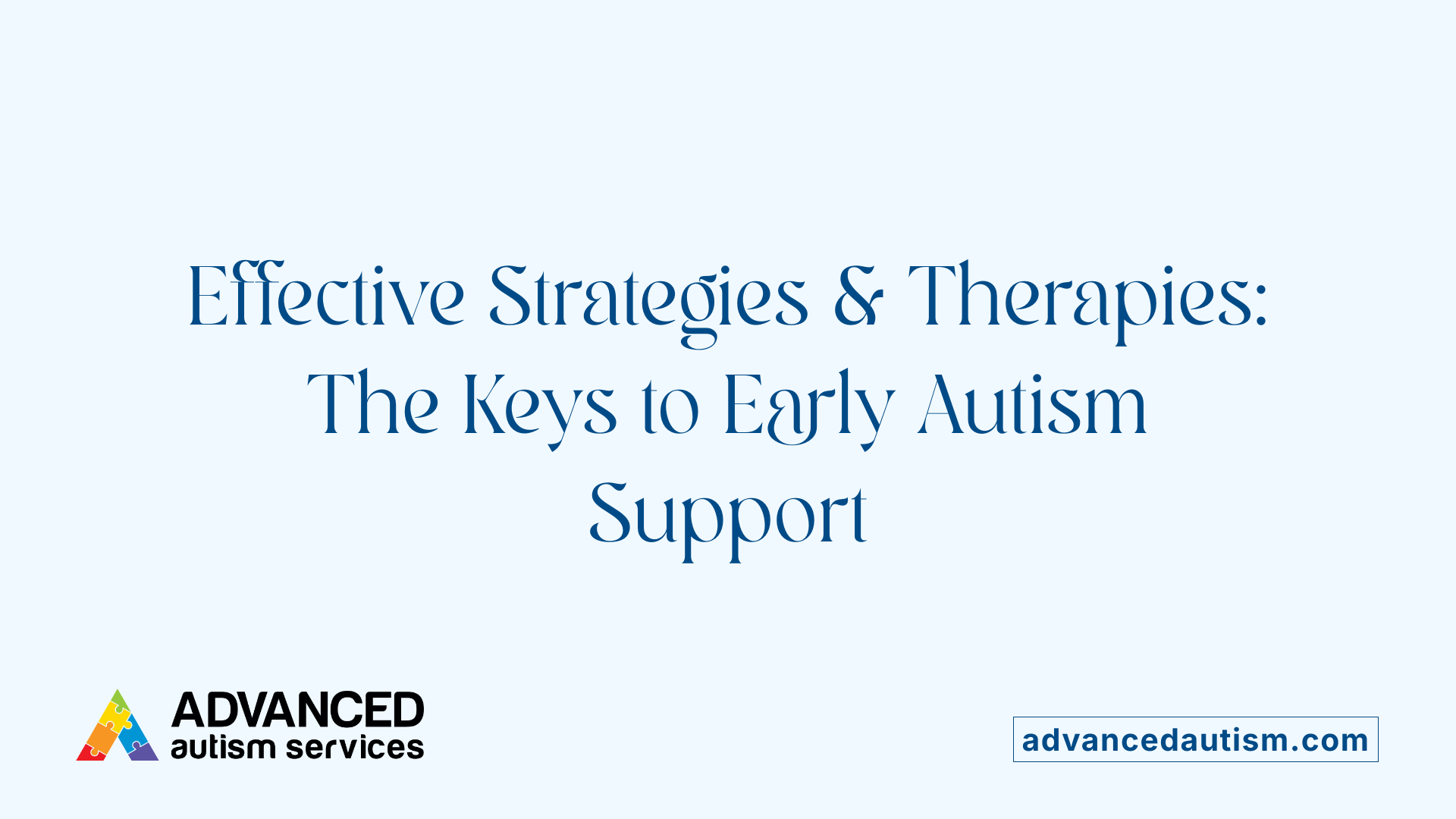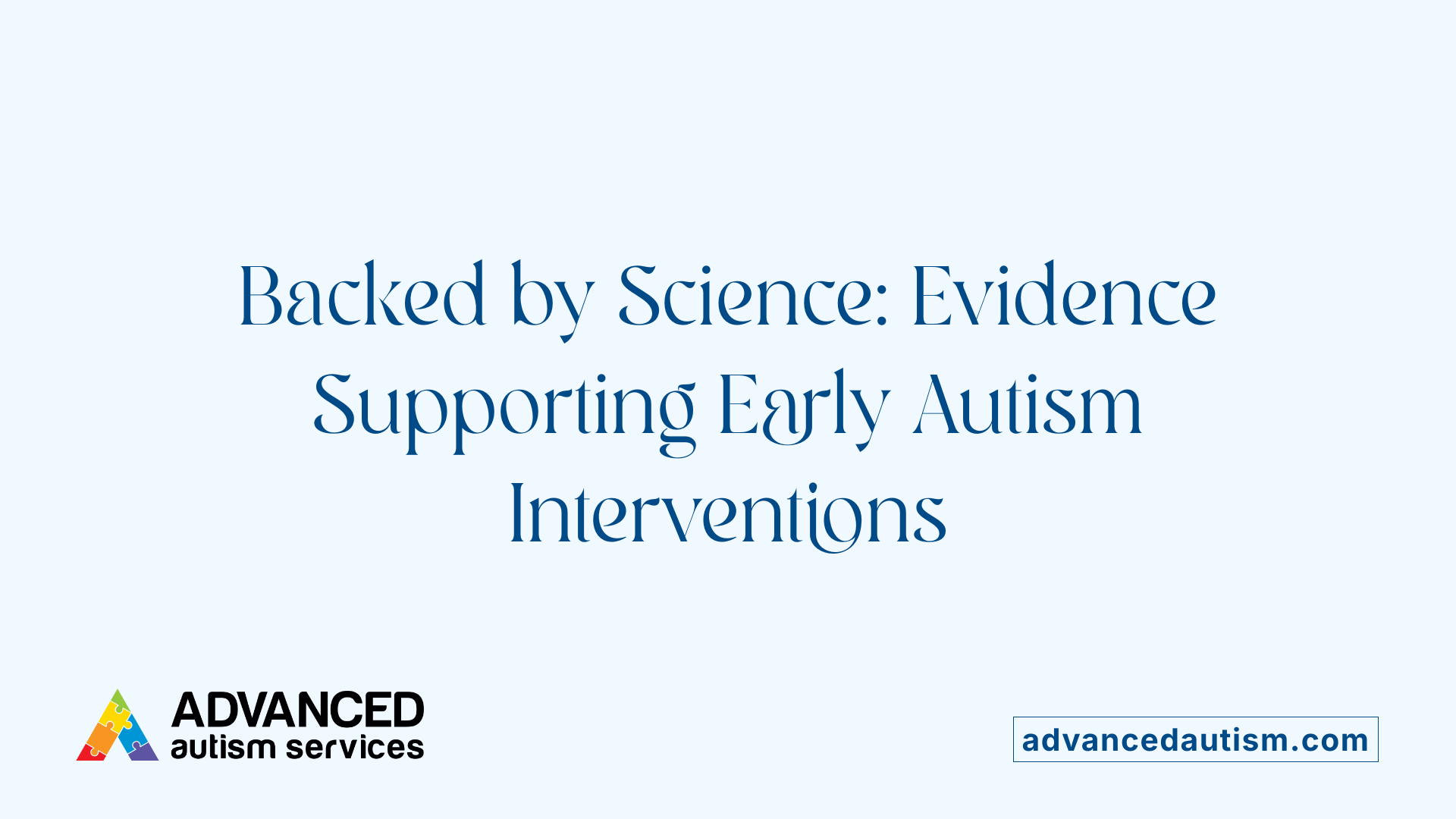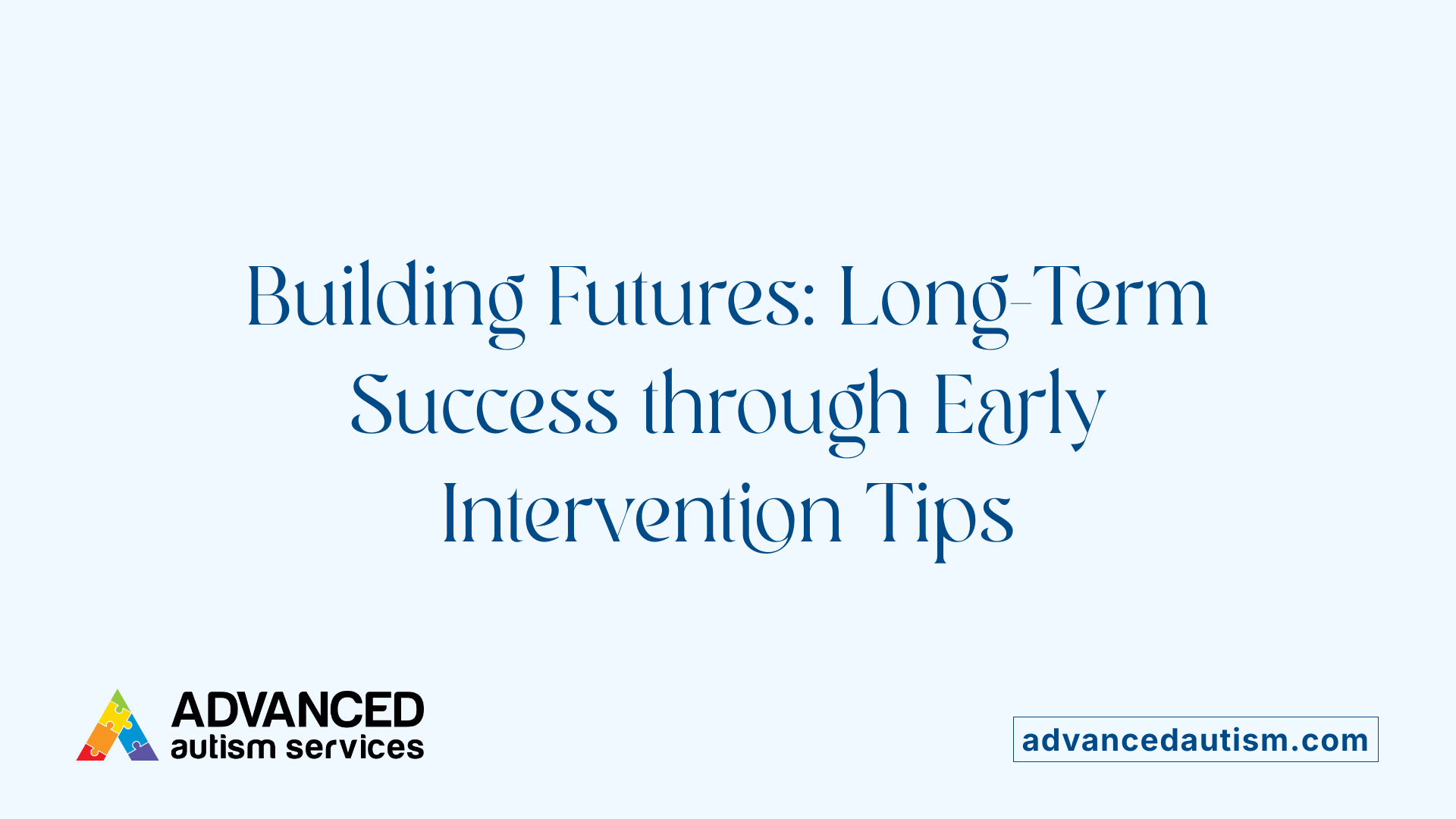Introduction: The Power of Early Support in Autism
Early intervention plays a pivotal role in shaping the developmental trajectory of children diagnosed with autism spectrum disorder (ASD). When started during the critical early years, typically between age 1 and 3, these targeted therapies leverage the brain’s neuroplasticity, fostering meaningful improvements in communication, social skills, and behavior. This comprehensive approach not only addresses core symptoms but also significantly enhances long-term outcomes, enabling children with autism to reach their full potential and thrive in various environments. Recognizing early signs and initiating timely intervention is essential to maximize these benefits and improve quality of life for children and their families.
The Critical Impact of Early Diagnosis and Intervention

Importance of early diagnosis in autism
Recognizing autism at an early stage is vital for initiating timely support that can influence a child's developmental trajectory. Early signs such as lack of eye contact, delayed speech, repetitive movements, and limited social engagement can serve as indicators for parents and caregivers to seek professional evaluations. When autism is diagnosed during infancy or toddlerhood—often before age 2—interventions can commence promptly, capitalizing on a period when the brain is highly adaptable.
Brain plasticity during early childhood
A fundamental reason why early intervention is so effective lies in the brain's plasticity during early childhood. During the first few years of life, the brain is especially receptive to learning and change, with neural pathways being highly adaptable. This period, roughly from birth to age three, provides an optimal window for therapies that develop communication, social, and motor skills. Interventions such as speech therapy and behavioral strategies harness this plasticity, promoting neural growth and strengthening pathways associated with social understanding and emotional regulation.
Long-term benefits of early intervention
Starting intervention early—ideally before age three—has been linked to significant positive outcomes. Research shows that children who receive tailored services during this window show improvements in core areas like language, social interaction, and adaptive behavior. These efforts can result in a measurable reduction in autistic symptoms, sometimes to the point where children no longer meet the diagnostic criteria for autism.
Furthermore, early intervention supports comprehensive development, including cognitive skills, daily living independence, and emotional regulation. For example, therapies like Applied Behavior Analysis (ABA) are used effectively to teach skills, reduce problematic behaviors, and promote social engagement.
The long-term benefits extend into adulthood, with improved academic performance, stronger social relationships, and increased independence. Family involvement and consistent support also play crucial roles, reinforcing gains made through therapy.
| Aspect | Benefits | Supporting Details |
|---|---|---|
| Communication | Improved speech and language skills | Speech therapy, visual supports, alternative communication |
| Social Skills | Better peer interactions and eye contact | Structured social activities, behavioral strategies |
| Adaptive Living | Increased independence in daily routines | Training in dressing, feeding, routines |
| Behavioral Management | Reduced challenging behaviors | ABA therapy, sensory integration techniques |
| Cognitive Development | Enhanced problem-solving and learning abilities | Tailored educational programs |
Effective therapies and family participation
Interventions involve a multidisciplinary approach including speech therapy, occupational therapy, behavioral strategies such as ABA, and family training programs. Parents and caregivers are encouraged to actively participate, practicing consistent routines and reinforcing skills at home.
Innovations like remote video coaching and digital tools are increasingly supporting families, reducing barriers like long waiting times for services.
Overall, early diagnosis and intervention not only promote improvements in core symptoms but also empower families, providing them with the tools and support necessary to foster their child's development.
Recognizing early signs and seeking support within the critical neuroplastic window can unlock a child's full potential, paving the way for a more independent and fulfilling life.
Strategies and Therapies Behind Successful Early Intervention

What strategies and therapies are involved in early intervention programs for autism?
Early intervention programs for autism incorporate a range of tailored strategies and therapies designed to support children's developmental progress and reduce symptoms. Because each child has unique needs, these programs often combine several approaches to maximize effectiveness.
One of the most widely recognized therapies is Applied Behavior Analysis (ABA). Known as the gold standard, ABA focuses on shaping behaviors and teaching new skills through structured reinforcement. It helps reduce challenging behaviors while promoting social, communication, and adaptive skills.
Developmentally oriented methods such as the Early Start Denver Model (ESDM) use play-based interactions, emphasizing the importance of building relationships while fostering language, social, and cognitive skills. These approaches leverage a child's natural interests, making learning engaging and effective.
Speech and language therapy are key components, aiming to improve both expressive and receptive language abilities. Therapists work on articulation, understanding language, and using alternative communication methods like Picture Exchange Communication System (PECS) or augmentative devices.
Occupational therapy addresses sensory processing issues, fine motor skills, and daily living activities. Techniques like sensory integration therapy help children manage sensory overload or sensitivities, promoting better participation in everyday routines.
Social stories and visual supports are often used to teach social skills, helping children understand social cues, routines, and expectations. These tools foster emotional regulation and social interactions.
Additional therapies, such as music therapy, can enhance emotional expression and sensory integration, while Floortime emphasizes relationship-building through play to encourage development across multiple domains.
Family involvement is vital in early intervention. Parents and caregivers are trained to reinforce strategies at home, ensuring consistency and supporting the child's learning across different environments. Early diagnosis, often before age 2, exploits the brain's high plasticity during early childhood, leading to significant improvements in IQ, communication, social skills, and behaviors.
Research underscores that these comprehensive, individualized programs are most successful when started early, with some children even no longer meeting the criteria for autism as a result of targeted intervention during the critical early years.
| Therapy Type | Focus Area | Common Techniques | Additional Notes |
|---|---|---|---|
| ABA | Behavioral skills | Reinforcement, prompting | Gold standard for autism, tailored to individual needs |
| ESDM | Developmental play | Play-based, relationship-centered | Uses natural routines to promote social and language skills |
| Speech Therapy | Language skills | Articulation training, AAC devices | Improves expressive and receptive communication |
| Occupational Therapy | Motor and sensory | Sensory integration, fine motor skills activities | Helps manage sensory sensitivities |
| Social Stories | Social understanding | Visual supports, routine scripts | Teaches social cues and routines |
| Floortime | Emotional development | Play-based interaction | Focuses on relationship building and emotional regulation |
Overall, early intervention combines these strategies to build a supportive environment that nurtures every aspect of a child's development, leading to better long-term outcomes and greater independence.
The Trustworthy Evidence Base for Early Autism Interventions

What does research say about the effectiveness of early intervention in autism?
Research plays a crucial role in understanding how early intervention impacts children with autism. Consistent findings indicate that starting therapies as early as possible—often before age three—significantly improves outcomes in critical developmental domains.
Scientific studies show that early intervention can lead to notable progress in skills such as communication, social interaction, and daily living activities. When interventions are initiated between 18 and 36 months, children tend to experience greater gains, including improvements in language development, social cues, and motor skills.
Programs like the Early Start Denver Model and parent-implemented therapies have been particularly effective, demonstrating that active parental involvement amplifies the benefits. These approaches not only boost IQ scores but can also lead to some children no longer meeting diagnostic criteria for autism, reflecting substantial progress.
However, the available evidence suggests that while early intervention enhances many developmental areas, its impact on core language and social skills might be more modest. Many children still require ongoing support, but the foundation laid through early therapies increases their chances of long-term success.
High-quality, tailored interventions are essential. Using evidence-based methods such as Applied Behavior Analysis (ABA), speech therapy, and occupational therapy, clinicians can customize strategies to each child's needs. Techniques like visual supports, consistency in routines, and sensory integration contribute to effective learning.
A recent comprehensive review highlighted that each child's response to intervention depends on multiple factors, including age at start, IQ level, and the specific combination of therapies used. Children with higher cognitive abilities and better language skills tend to make more significant advances, emphasizing the importance of early detection and personalized treatment plans.
Supporting families throughout this process is equally vital. Involving parents in therapy sessions and providing them with tools for daily reinforcement enhances progress. Innovative tools such as teletherapy, mobile apps, and virtual coaching are expanding access, especially in areas with long wait times for diagnosis.
In summary, research confirms that early diagnosis and well-implemented interventions—preferably starting before age three—are essential to optimizing developmental potential. While not a guarantee of complete recovery, early intervention can substantially improve communication, social skills, and adaptive behaviors, ultimately enhancing quality of life for children with autism.
| Aspect of Early Intervention | Effectiveness | Supporting Evidence | Additional Notes |
|---|---|---|---|
| Language Development | Significant | Better language skills when therapy starts before age 3 | Includes speech therapy, alternative communication methods |
| Social Skills | Improved | Early play and social interaction programs lead to better social engagement | Incorporate visual supports, social stories |
| Behavioral Challenges | Reduced | ABA therapy effectively reduces problematic behaviors | Focus on positive reinforcement |
| Daily Living Skills | Increased | Skills in dressing, feeding, routines improved with targeted interventions | Fosters independence |
| Parental Involvement | Crucial | Parent-implemented programs enhance child outcomes | PACT, iBASIS models |
Continued research underscores that early, intensive, and individualized intervention provides children with autism the best chance to develop essential skills and achieve greater independence. The focus remains on supporting strengths and creating environments conducive to learning, recognizing the diverse profiles of autistic children.
Long-Term Outcomes and Practical Tips for Success in Early Intervention

How does early intervention influence long-term outcomes for children with autism?
Research clearly indicates that starting early intervention can substantially enhance the future of children with autism. When therapies such as behavioral strategies, speech-language therapy, and family involvement are implemented during the critical early years—particularly before age 4—they harness the child's brain plasticity to promote more significant development.
Children who receive timely and tailored interventions often show improvements in social, communication, and motor skills. Some progress to the point where they no longer meet the diagnostic criteria for autism, demonstrating the profound impact of early support.
The benefits extend beyond immediate improvements. Long-term, children tend to have higher IQ scores, better language abilities, and more independence in daily activities. Many maintain or build upon initial gains, showing enhanced social relationships, academic achievements, and adaptive skills.
This trend emphasizes that early diagnosis combined with prompt, individualized treatment can change developmental trajectories. It not only lessens the severity of symptoms but also fosters sustained progress over the years, setting children on a path toward a more independent and fulfilling life.
What practical tips can families and communities adopt to facilitate early intervention?
Implementing early intervention effectively requires active participation from families and supportive community environments. Tips include integrating therapy practices into daily routines, such as play, mealtime, and outdoor activities. This natural setting approach makes learning seamless and less stressful for the child.
Parents and caregivers should seek guidance from trained professionals to learn how best to use everyday interactions to boost developmental skills. Consistent practice at home, alongside formal therapies, amplifies progress.
Creating structured routines and visual supports—like picture schedules or timers—help children understand expectations and develop communication and self-help skills. Using assistive technology or communication devices can also empower children to express themselves.
Effective communication with therapists and educators ensures that intervention strategies remain aligned with the child's changing needs. Family involvement is crucial; setting shared goals and focusing on meaningful activities in familiar environments foster motivation and progress.
In summary, fostering a collaborative, consistent, and adaptable approach in both home and community settings can greatly facilitate successful early intervention, unlocking each child's potential.
| Aspect | Tips | Details |
|---|---|---|
| Environment | Support natural routines | Use play, meals, and outings to teach skills |
| Family Role | Active participation | Practice strategies, reinforce skills at home |
| Visual Supports | Use tools | Picture schedules, visual cues for daily routines |
| Communication | Collaborate with providers | Maintain open dialogue for tailored strategies |
| Community | Foster inclusive activities | Engage children in social and educational settings |
Overall, early intervention is most effective when it is proactive, personalized, and embedded in the child's everyday environment. Families and communities play a central role in creating a supportive framework that promotes continuous development and long-term success.
Conclusion: Building a Foundation for a Thriving Future
The evidence underscores that early intervention is not just a supportive measure but a fundamental component in the developmental journey of children with autism. By initiating tailored therapies as early as possible, families can harness the brain’s remarkable plasticity to promote critical skills in communication, socialization, and independence. Such early support not only helps mitigate symptoms but also secures better academic, social, and adaptive outcomes over the long term. As research continues to validate the profound benefits of early intervention, it becomes clear that timely diagnosis and immediate, individualized action can unlock opportunities for children with autism to thrive, connect, and lead fulfilling lives.
References
- Early Intervention for Autism | NICHD
- Early Intervention for Children with Autism: A Pathway to Support ...
- Unlock Potential: The Transformative Power of Early Intervention
- Why Early Intervention Matters for Autism
- How Early Intervention Helps Children with Autism Thrive
- The Critical Role of Early Intervention and the Future of Support
- Why Early Intervention is Important for Autism Development
- Importance of Early Intervention for Autism | All Star ABA
- Early Intervention is Key for Helping Kids With Autism Spectrum ...
- Importance of Early Intervention in Reducing Autistic Symptoms and ...



